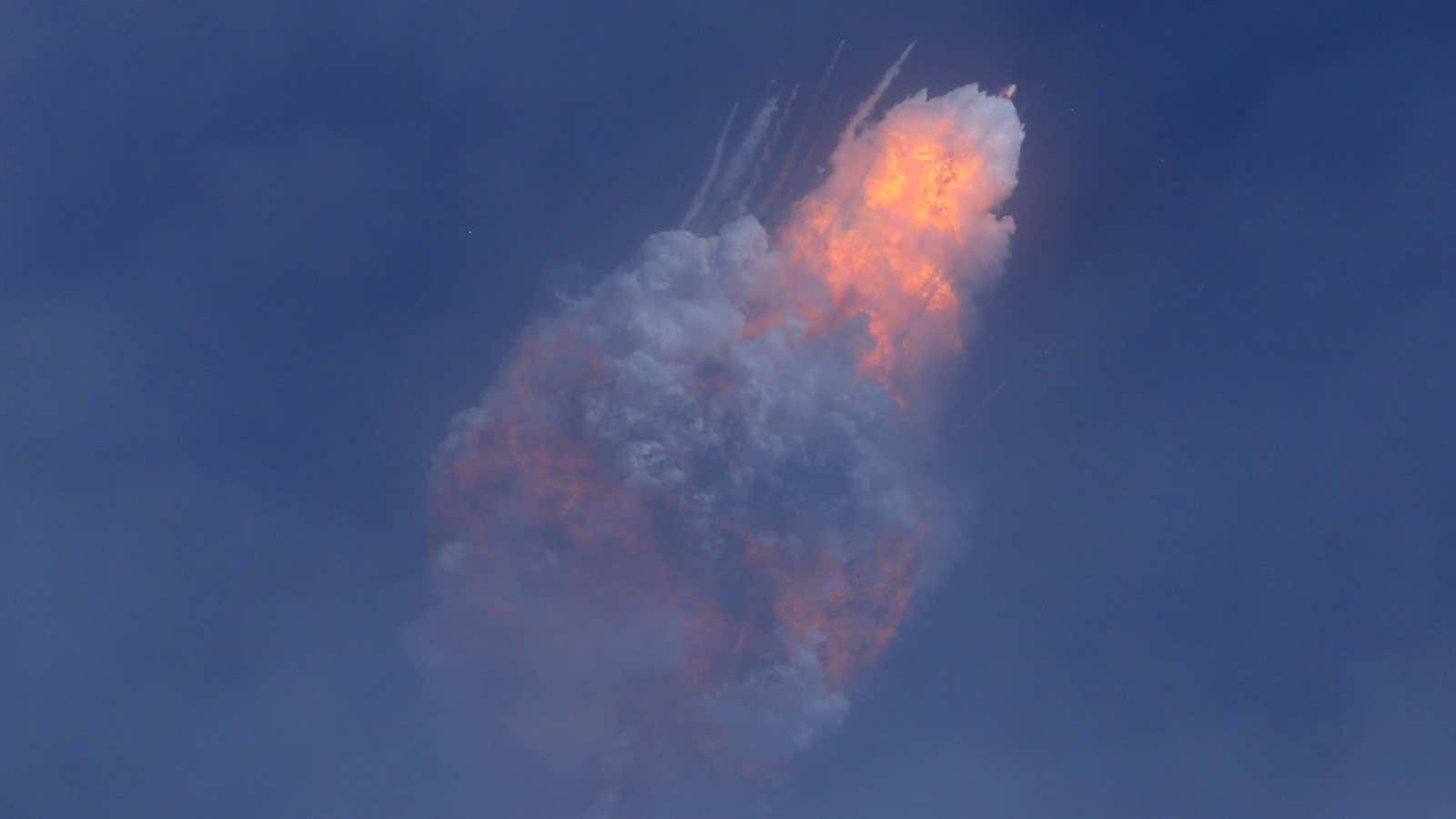The Falcon 9 rocket hurtled through the air today some 20 km (12 miles) above the ground with its engines shut off. Seconds later, buffeted by the impact of the atmosphere at nearly twice the speed of sound, it burst into flames.
But the SpaceX team that built the rocket was too busy cheering to pay much attention—far more importantly, the Dragon spacecraft on top had escaped, using its own thrusters to fly to safety, reorient itself, and eventually deploy its parachutes to drift safely down to the ocean below.
The intentional sacrifice of the reusable booster—which had flown three previous times—was the price paid for the best possible data about how to keep future astronauts safe in a worst-case scenario. In 2018, a similar system saved the lives of an astronaut and a cosmonaut launched by Russia’s space agency on a Soyuz rocket.
The test of the Dragon’s launch escape system was the final milestone in SpaceX’s years-long path to fly astronauts to the International Space Station for NASA. Now, engineers at the US space agency and the rocket-maker founded by Elon Musk will put their heads together, going over reams of data to finally certify the crew Dragon spacecraft and the Falcon 9 for a crewed flight test that could take place as soon as March.
“This was a picture-perfect mission,” SpaceX founder and chief designer Elon Musk said. Two astronauts scheduled to fly on the Dragon, Mike Hopkins and Victor Glover, said afterward that they were glad to see the critical safety test go well—as were their families, according to their wives, who texted them after the demonstration.
SpaceX flew a successful uncrewed dress rehearsal to the ISS in March 2019, but an anomaly in April destroyed that Dragon during propulsion testing. Solving that problem, as well as redesigning the vehicle’s parachutes, delayed today’s demonstration by seven months, but it seems the design changes functioned well.
Since 2011, when the space shuttle was retired, SpaceX and Boeing have been working to design and operate vehicles to carry astronauts to the $150 billion orbital laboratory. The commercial crew program aims to save money and time by outsourcing more responsibility to private companies, but the new model for human spaceflight still needs to be proven with success. So far it has been at least cheaper than most spacecraft development efforts.
Boeing and NASA are still analyzing data from a December test that saw Boeing’s spacecraft, called the Starliner, launch to orbit successfully on an uncrewed mission but fail to rendezvous with the ISS. Engineers are determining what wrong with the spacecraft’s internal clock and if the Starliner can move directly to a crewed flight test without further demonstrations.
For SpaceX, which was founded on Musk’s aspirations to convey humanity into the solar system, the first flight of astronauts can’t come soon enough.
